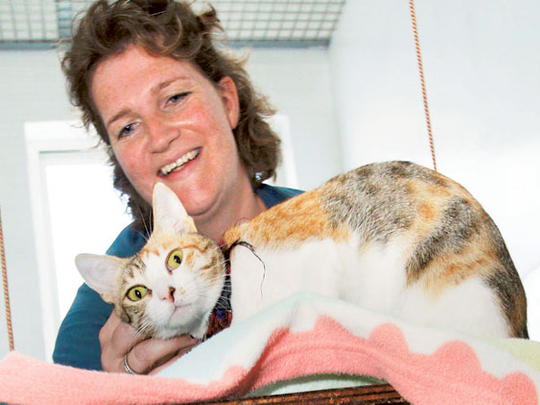
Ras Al Khaimah: When summer sets in, heat-related illnesses are usually seen affecting humans. But many people ignore the fact that intense heat gravely affects pets, as the number of abandoned pets increases during summer, animal welfare advocates have warned.
“In summer, there are more animals being surrendered or abandoned and there’s less people adopting because everybody’s leaving the country during summer. So for animal welfare, it’s a horrible time of year,” Ellen Quanjer, manager of Ras Al Khaimah Animal Welfare Centre (RAK AWC), told Gulf News.
According to RAK AWC data, more dogs were surrendered as the summer months kicked in, creating a pattern. From two dogs in January, the number went up to 28 in May and 21 in June. Surrendered cats are fewer but the number still raises concern, Quanjer said. The list does not include around 200 stray animals that RAK AWC rehabilitates and trains on a monthly basis.
Most vulnerable
Abandoned pets are exposed to extreme weather conditions and the heat actually poses more of a danger to them than to human beings. In this case, dogs are the most vulnerable animal group.
“Abandoned animals are used to living in homes where the temperature is controlled and if they are just left outside, they are not used to the heat. They don’t acclimatise to the heat,” Dr Chenjerai Sigauke, veterinary manager at RAK AWC, said.
“Dogs cannot easily control their body temperature. Unlike us who can sweat, they can only sweat through the nose, through the pads of their feet. The other way they lose heat is through the tongue, when they are panting,” Dr Sigauke added.
Older dogs, short-nosed dogs, and those with thick coats can develop heat stress very easily as compared to others. From heat stress, it can develop into heatstroke, which can lead to the animal’s death, if no one intervenes.
Dehydration is also a big problem among pets during summer. Dr Sigauke said that warning signs of dehydration are easily detectable —sunken eyes, loose neck skin, and sticky gums.
Walking your dog should also be done early in the morning or in the evening when the pavements are cooler. Pets can easily burn their paws while walking on tarmac on a very hot day.
“If you take a pet into your home, it becomes a family member and I don’t understand how you can just leave them in the summer when you know that they will just die a slow death,” Quanjer said, adding, “If you dump your pets in the streets, you’re nothing less than a murderer, really.”












